Last week I began a conversation about Fermented Foods in which I explained the need for lacto-fermented foods in our diets. Today, I am expanding on the topic of lacto fermented foods and showing you how to make one of the easiest lacto fermented vegetable. A sort-of Lacto-Fermentation 101.
Lacto-fermented garlic or Pickled Garlic couldn’t be easier once you have a few pieces of key equipment and supplies on hand.
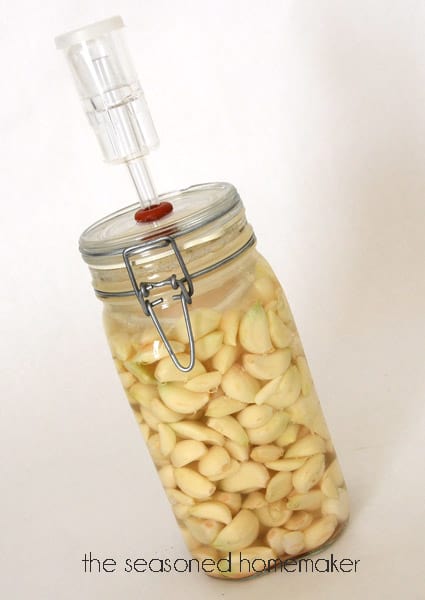
The first thing you need is a proper fermentation jar. A while back I created a post on how to inexpensively make an anaerobic fermentation jar. I believe that this type of fermenting jar is the safest for keeping out harmful bacteria.
There are many different sellers of fermentation jars, and I suggest you research the entire topic before jumping in and making a bunch or buying a case. This excellent review will shed some light on the topic of fermenting jars.
Start with Organic Garlic. Commercial garlic has been sprayed to prevent it from sprouting.

After hand peeling all of this garlic, I found a YouTube video on How to Peel a Head of Garlic in Less than 10 Seconds. #liveandlearn
How much garlic you add to the jar will depend upon how much garlic you have. A dozen cloves of garlic should work well with a 1 liter jar. I suggest adding enough garlic to fill a fermenting jar, while not filling past the neck of the jar.
You will need to make a 2% brine for fermenting. The brine ratio is 4 cups of filtered water to 20 grams of salt. The amount of salt and the quality of salt are extremely important. I use a finely ground Pink Himalayan salt (found at health food stores) to ensure the quality of my ferment. Common table salt will not do because of the additives.
I also recommend picking up an inexpensive kitchen scale (<–Amazon Affiliate) that can measure out grams. The precise amount of salt is important to the safety of your ferment. Too little salt or too much salt can cause the ferment to become putrid.
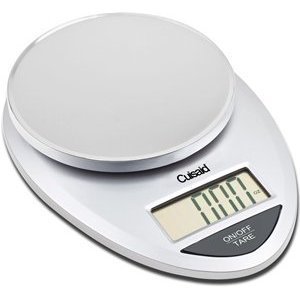
Lastly, you will need a glass weight to hold the garlic down during the ferment. Purchased pickling jars come with weights. If you are making your own pickling jar, there are several suggestions for things to use for weights. Read the comments section of this post for ideas.
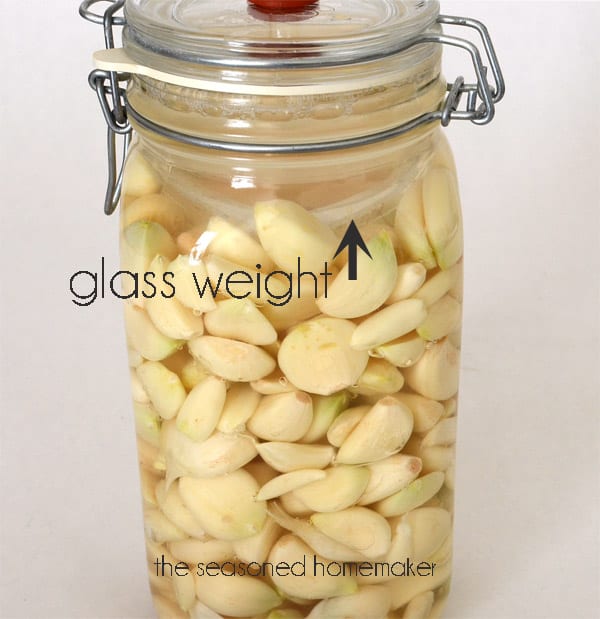
Assemble the 3-piece airlock and put it into the grommet.

Add filtered water to the fill line.
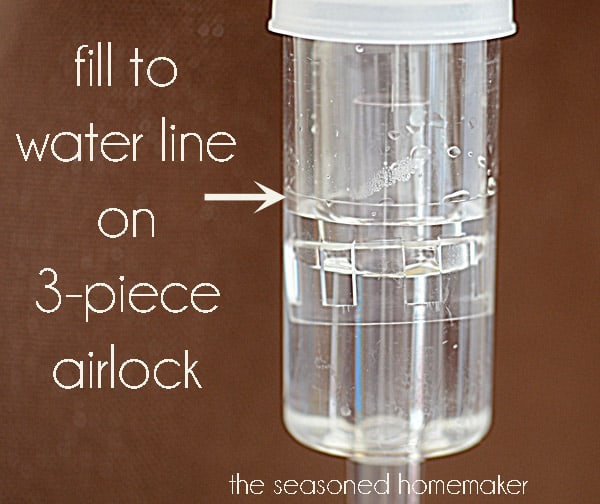
Cover the jar with a towel and let the fermenting begin. This is what you should start to see within 24 hours. This means that the good bacteria is starting to do its job. Carbon dioxide is replacing oxygen in the jar. Lactic acid and enzymes are forming. This stage takes 1-3 days depending on the temperature in your kitchen.
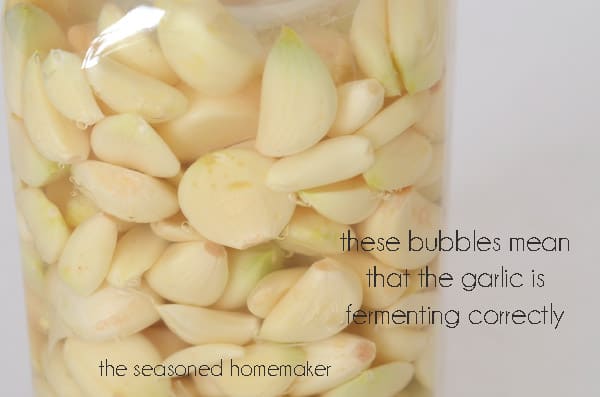
After 2-3 days (depending on the temperature in your kitchen) lactic acid should begin to build up. If you have used the correct amount of salt, then you will see small bubbles releasing from the airlock. Also, bubbles should be near the neck of the ferment.
This stage should last a few more days. Since I live in Texas, my ferments take place quickly. I never leave garlic {or any other ferment} on the counter for more than 5 days.
See the bubbles in the picture below. That means the ferment is very active.

At this point, I refrigerate the ferment (and remove the towel) for another 2-3 weeks. I will know that the maximum amount of lactic acid has been built up when there is no more carbon dioxide being released through the airlock. This happens when the center piece in the 3-piece airlock has stopped floating and has dropped.
At this point, I remove the airlock and replace it with a plug.
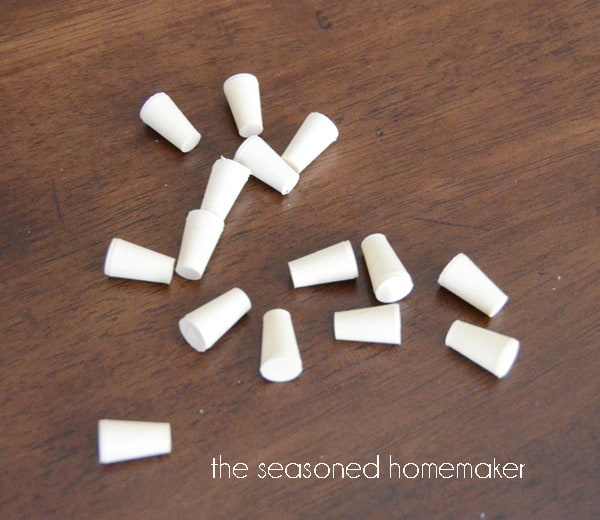
I now have lacto-fermented garlic that is loaded with essential nutrients and lactic acid bacteria. The fermentation has mellowed the garlic, and it now has a smooth, buttery flavor.
One use for my garlic is in a salad dressing. Of course, the garlic can be used in cooking, but all of the beneficial nutrients are lost. Raw is better, but cooked is delicious.
If you feel a cold coming on, eat one or two of these and see the difference. Easier than a visit to the doctor and a whole lot cheaper.
Remember, eating raw, lacto-fermented garlic is also perfect for keeping colds {and vampires} at bay.
I want to urge you to do some serious research before diving into the world of lacto-fermentation. I read up on the subject for several months before starting my first ferment. The first few ferments were haz-mat incidents that had to be tossed because of mold growth.
Because these ancient methods are no longer handed down to us, we have to rely on others who are leading the way. Lisa’s Counter Culture is a great site for learning more. I also recommend the book Real Food Fermentation by Alex Lewin.( Affiliate)
Original article and pictures take www.seasonedhomemaker.com site
Комментариев нет:
Отправить комментарий